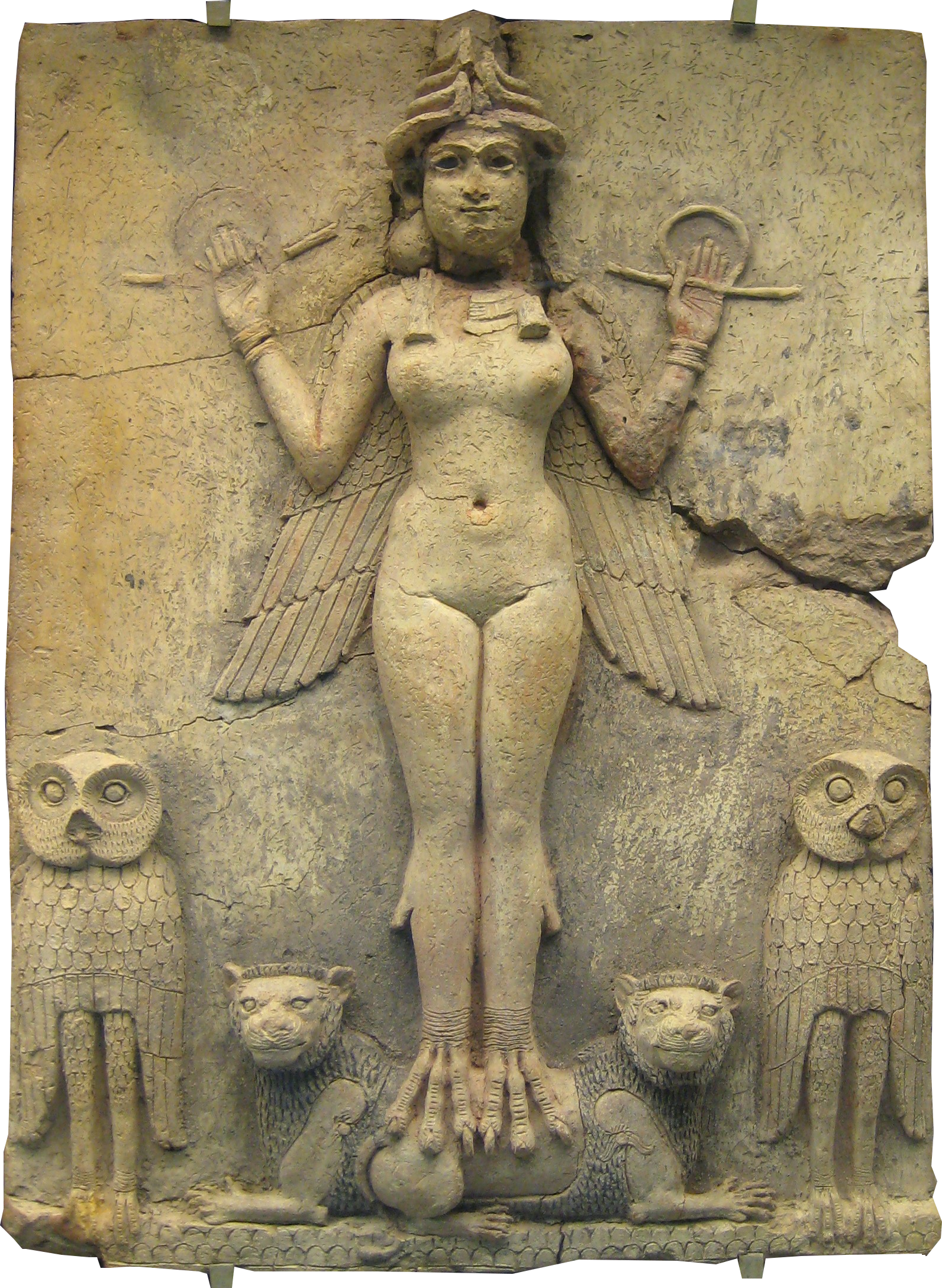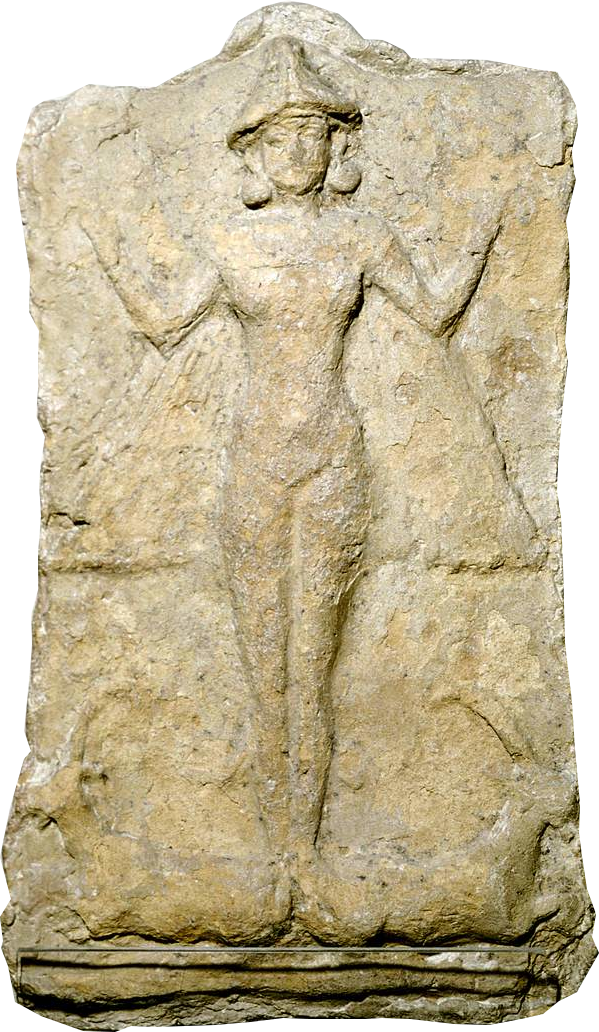Ancient Psychedelia: Alien Gods & Mushroom Goddesses
Online Book - Chapter 12, Page 241
Back to Online Book Mainpage / Next Page (Chapter 12, Page 242)
| Unfortunately, this is all that is mentioned of Lilith in this text. What are we left to gather from this? Well, first of all, this is a retelling of the story of Etana with the bird and serpent again. Lilith’s home was in the truck of the tree. This insinuates both an owl and a mushroom, which both make their homes in the trunks of trees. More clues will eventually lead us to a more accurate and complete understanding of who Lilith was. One of the only images we have that is known or reasonably assumed to be Lilith is from a Babylonian terracotta, “Burney Relief,” c. 1800-1750 BC, where she is depicted as the Queen of the Beasts. She is slender, nude and beautiful. She is surrounded by lions and owls. She is wearing a peculiar cap on her head with horns. In her hands she is holding the symbol of life which eventually became the Ankh (13b). (72) It is debatable whether this is Lilith’s depiction or Astarte’s since Astarte was the real Queen of Heaven for the Hebrews in Canaan at the time and this is the era and location for this plaque. The owls may or may not represent Lilith as an owl goddess. Clearly she is a mushroom goddess in this image and even more so, in the image that is similar to hers in the Louvre Museum from 200-100 BC, which only depict rams (13a). On a 7th century BC tablet from Arslan Tash in northern Syria, Lilith, as a winged sphinx is depicted, and contains the following inscription written in a Phoenician-Canaanite dialect: “O flyer in the dark chamber, go away at once O Lilli!” According to Albright, in the Bulletin of Oriental Research, these lines are part of an incantation text used for aid in childbirth. (73) It’s very likely this is where the confusion started regarding Lilith being a succubus in Kabbalistic Judaism almost 2000 years later. (74) Recent excavations by the University of Pennsylvania in the area of Nippur unearthed dozens of bowls with Hebrew magical texts inscribed, with specific incantations against Lilith or Liliths. The bowls date from 600 AD, a date that falls within 100 years of the Talmud, originally compiled around 500 AD. (75) It’s therefore likely that the ideas promulgated in the Talmud originated from tenets of Zoroastrianism, since this is the first religion where we can see the appearance of the dualities of the universe expanded upon and emphasized. These same tenets later became whole universes of philosophy within Gnosticism. In all probability the Talmudists of early times were Hebrew Gnostics of one sort or another. It wasn’t until the later Midrash Abkir of the 10th century, and the Zohar which followed, that Lilith became the wife of Adam. It’s important to understand how these stories evolve because many people put a lot of emphasis on these matters which ultimately are not much more than fairy tales. (76) |
 (13b) Astarte. British Museum. "Burney Relief" c. 1800-1750 BC  (13a) Astarte, Louvre Museum c. 200-100 BC (72) Emil G.H. Kraeling, Bulletin of the American Schools of Oriental Research 67 (Oct. 1937), pp. 16-18 (73) Cf. William F. Albright, Bulletin of the American Schools of Oriental Research 76 (Dec. 1939), p. 9 (74) Hebrew Goddess, p. 221-22 (75) ibid, p. 224-25 (76) ibid, p. 232 |
Go Back to Page 240